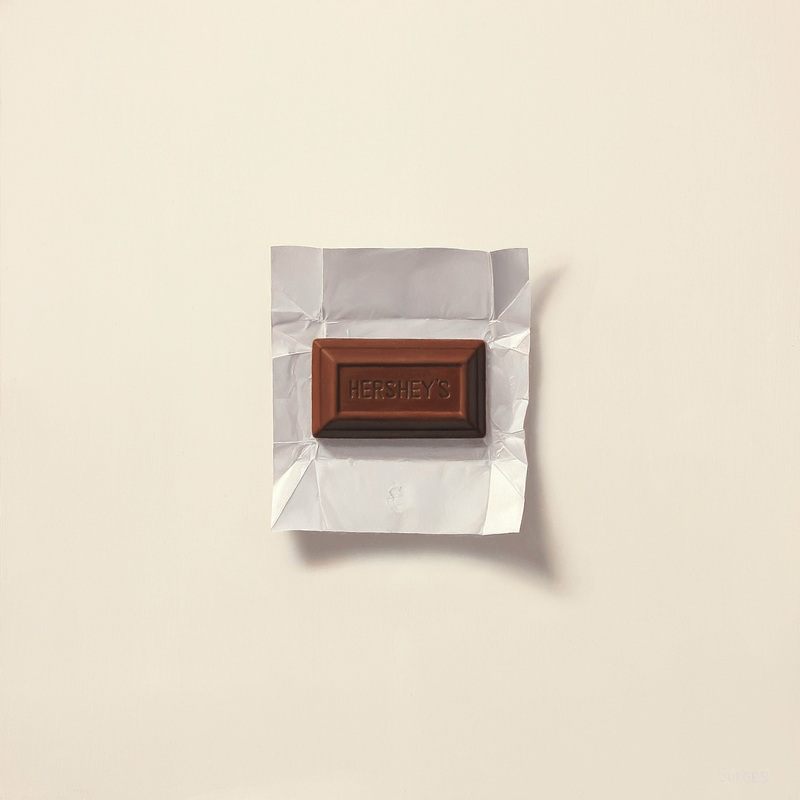Entering Juried Exhibitions
A great way to start your art career is to apply for group exhibitions, most commonly juried competition. Typically, you will show only one piece in an exhibit. This is ideal for the emerging artist who doesn't have a large inventory of paintings to show. Also, each competition you are accepted into is another exhibit you can list on your resume. The more experience you have showing your work will give you better credibility as an artist. Plus, you never know what kind of opportunities will present themselves from participating. Jurors are often well known in the local community and numerous people will attend the opening reception, all of whom will view your work. I was fortunate to be discovered by a gallery owner at a juried exhibition. He happened to be one of the jurors for the show and was immediately drawn to my work. I won 2nd place in the competition and established representation with a gallery in Chicago. Sounds too easy right, well sometimes it is. I'm not the only artist to be picked up by a gallery through a juried competition. While I cannot guarantee instant success, this page will take you through the steps on how to find these juried shows and how to apply.
|
|
The first step is to find juried exhibitions. This is where the internet becomes an important tool. Many times, the host of the shows will post their event on other websites dedicated to listing art exhibits. I listed the ones I use below.
Artshow.com - I use this one exclusively. It lists art shows all around the country by region. If you decide to use only one website to hunt for juried exhibitions, let it be this one. The Art List Chicago Artists Resource - This is a decent one if you live in or near the Chicago land area . CaFÉ - also know as Call for Entry Sometimes these exhibitions will ask for artwork of a specific theme, medium, location, etc.. For example, you may come across a call for entry that only wants watercolor landscape paintings from artist 18 or older or possibly photography that demonstrates decay from the Illinois, Wisconsin, Indiana or Missouri. Be sure that your work qualifies for the show. Most of the time the call for entry will tell you if the show is "national" or "international". These are great to be a part of because not only will you be competing against local artists, but artists from all around. Winning a national show also looks pretty good on a resume.
The next couple things I look for is location and the amount of prize money being awarded. I try to find the local call for entries closest to me first, but if there is a juried show in a neighboring state with a large prize, I will consider it. Remember, not all exhibits require you to attend the opening reception, in fact many national shows don't. This means as long as you pay the entry fee, pay for the shipping there and back, you can be in the exhibit. However shipping art is an art itself. For more information on shipping artwork, view my Shipping a Painting page.
|
To the right I have included an example of what a typical exhibition entry to a juried competition looks like. The form is clear and concise. They list the awards, who the juror is and his or her background, calendar of deadlines and events, and lastly instructions on how to enter. This particular show allows you to submit 3 images to show and the juror may select one of them. Sometimes you will see some competitions that want you to pay per image. For example $20 for the first image and an additional $10 for each additional image, total of 4.
|
Choosing art to submit to a competition is difficult. Generally the conception is that bigger is better; always submit your largest pieces to the show. While I think this is true to an extent, you can never be certain what the juror is looking for.
Lastly, look who is judging the show. They will be the determining factor for who gets accepted. Jurors tend to choose art that they like; this is both good and bad. While this may seem unfair, that is because it is - it is one of the negatives to being part of a juried exhibition. As a juror, its difficult to assemble a group of artwork and then pick the best few to receive awards. Assuming all pieces were brilliantly exercised and the craftsmanship is present, how does one determine that painting "A" is better than painting "B". It comes down to opinion; and more often than not, a bias opinion. I was in a competition in 2014 where the juror awarded the artist who submitted a chia pet - no joke. My paintings were beaten by a chia pet! Although you won't always agree with the juror in these competitions, I discourage you from letting the juror alone be the deciding factor of whether or not you submit to an exhibition. The truth is you can never be certain who the juror will award the prizes to. The only definite fact is that you can't win if you don't enter.
|
| ||||||
|
Consider the painting to the left. It's painted oil on panel. The dimensions are 8" x 8". It won in two separate competitions. This small candy bar painting placed 1st in one show and 2nd in another. Don't doubt that a small painting cannot win big.
When I have to choose one of my paintings to submit to a competition, I'll usually pick them based on how challenging it was to paint. I know this is not how all artists do it and nor should it. However, with my approach to art, I feel the more detail there is, the more interest it will receive.
Once you determined your choices to enter, make sure you have the correct digital format, file name, resolution and size the call for entry asks for. In the example I provided, it states to must have your image saved as a JPEG file titled "Last name_First initial_Entry#.jpg" at 4" x 6" at 300 dpi (resolution). Always make sure you adhere to the instructions. You don't want to passed by on the selection day for the show because you didn't have the proper file format or image size. Jurors have to sift through hundreds of applications during the selection process. If your image doesn't open correctly for them to view, you're out of luck. Its doubtful they will spend more than a few seconds looking at your image, let alone trying to figure out why it didn't open on the screen. |
Learn how to photograph your painting
|
|
Also take in account how the jurors will be viewing your digital image. If there are multiple jurors involved, they will probably be looking at them on a projection screen. Unfortunately for you, the artist, projection screens can work against you here. Even though you provided them with a high quality, high resolution image with good contrast and color, a projection screen will more often than not make it look terrible. Projections usually have low resolutions around 72dpi and can have significant inaccurate color, saturation, and contrast if it was not calibrated properly. Another problem jurors struggle with is the ability to grasp the dimensions of your piece. Even though you provided them with the size of your art, its still difficult to create a mental image of what your art will look like in reality by viewing it on a projection screen. These are all of the fallacies that can work against you.
To get around some these problems, I like to take extra pride and care in designing the CD and case in which my images will be saved and sent out. Below is a slide show of how I prepare a mail-in entry. You may say too much effort has been put into it, but I want the jurors to be able to tell by the packaging and execution that something good is inside. If I'm given the option to submit my images either through an email or CD, I always choose the CD. I know I can make the CD look more appealing than an email. This is also a good way to present digital portfolios to galleries when you look for gallery representation.
The final steps to entering a show before mailing everything is filling out the registration form and writing the check. Just about every juried competition require an entry fee. The cost is usually around $30. I know some artists will have a budget for the shows they enter each month. I don't find budging your entry fees to be necessary. If you are in the early stages of your career, its best not to let any opportunities go to waste. It's tough to get noticed I the art world and any chance you get to show your work, take it.



